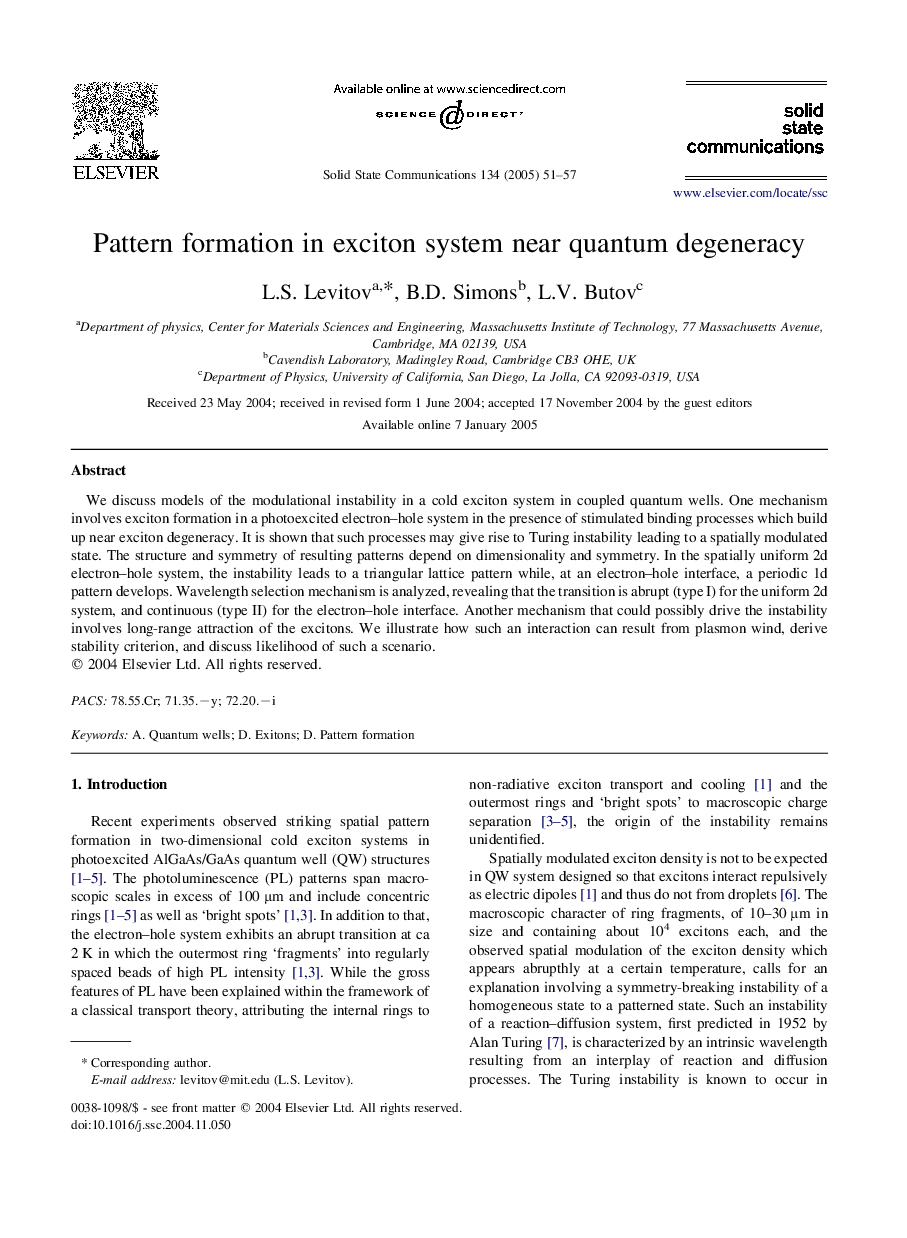| Article ID | Journal | Published Year | Pages | File Type |
|---|---|---|---|---|
| 9801987 | Solid State Communications | 2005 | 7 Pages |
Abstract
We discuss models of the modulational instability in a cold exciton system in coupled quantum wells. One mechanism involves exciton formation in a photoexcited electron-hole system in the presence of stimulated binding processes which build up near exciton degeneracy. It is shown that such processes may give rise to Turing instability leading to a spatially modulated state. The structure and symmetry of resulting patterns depend on dimensionality and symmetry. In the spatially uniform 2d electron-hole system, the instability leads to a triangular lattice pattern while, at an electron-hole interface, a periodic 1d pattern develops. Wavelength selection mechanism is analyzed, revealing that the transition is abrupt (type I) for the uniform 2d system, and continuous (type II) for the electron-hole interface. Another mechanism that could possibly drive the instability involves long-range attraction of the excitons. We illustrate how such an interaction can result from plasmon wind, derive stability criterion, and discuss likelihood of such a scenario.
Related Topics
Physical Sciences and Engineering
Materials Science
Materials Science (General)
Authors
L.S. Levitov, B.D. Simons, L.V. Butov,
